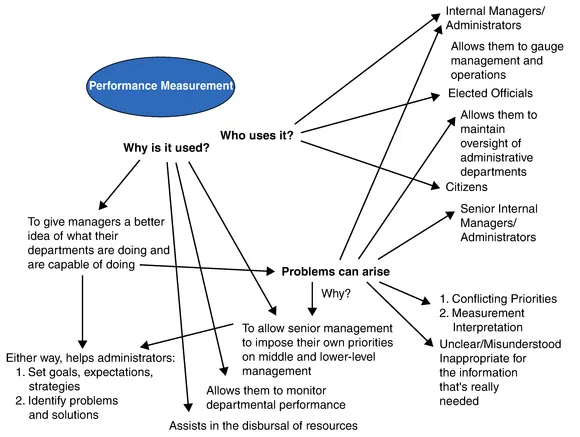
Public Administration
An Introduction
Marc Holzer, Richard W. Schwester
- 438 pages
- English
- ePUB (mobile friendly)
- Available on iOS & Android
Public Administration
An Introduction
Marc Holzer, Richard W. Schwester
About This Book
Marc Holzer and Richard W. Schwester have written a textbook that is distinct from the dozens of introductory public administration books now in the academic marketplace. Their vision is a unique blend of substance and style—a text that is both informative and enlivening, capturing the evolving nature of the field. The book explores the traditional, essential elements of public administration such as organizational theory, human resource management, leadership, program evaluation and policy analysis, budgeting, and the politics of public administration. Artwork depicts bureaucratic issues, reinforcing each chapter's themes and creating an informative and aesthetically engaging textbook, while charts, graphs, diagrams, and illustrations add dimensions to the text's overviews of public administration.
New to this edition are three sections that provide a natural flow and progression of the material. Section I provides the theoretical construct of public administration, section II provides actionable material for public administrators, while section III deals with the future of public organizations through the lens of performance improvement and the techniques available to achieve such improvement. Each chapter is complemented by key terms and supplementary readings, and video cases and simulations offer a gateway to engaging students, encouraging them to immerse themselves in virtual problem-solving experiences—testing theory and skills through real-time practical applications. Students will deal with issues related to unemployment, budgeting, the environment, crime and education.
The book is accompanied by a comprehensive online Instructors' Manual, complete with PowerPoint slides for each chapter, case studies, relevant YouTube videos to illustrate chapter content, additional artwork, webinars, and relevant films and tv shows to better engage students in important themes of public service. This text, then, is very much a dynamic learning system designed to enliven the teaching of public administration, improve the learning experience, and help motivate students of public service to become problem-solving public servants.
Frequently asked questions
Information
Section III
Improving the Efficiency and Efficacy of Public Organizations

Source: The NYHS Library Blog. http://blog.nyhistory.org/turning-the-pages-of-patriotism-with-the-american-library-association/. Accessed 1/30/15.
CHAPTER 10
Public Performance
Improving Government Performance
The Importance of Knowledge Sharing and Training
improvement consultant.
of the London School of Economics.
Measuring Performance to Improve Performance
- Is the organization fulfilling its mission and accomplishing stated goals and objectives?
- Is the organization producing unintended impacts?
- Is the organization responsive to the people?
- Does the organization keep within its scope of authority?
- Is the organization productive?
- Does it perform well?

Source: J. Wooley. 2006. School of Public Affairs and Administration, Rutgers University-Newark.
- Improved decision-making: Performance measures afford managers needed information to execute their control functions.
- Performance assessment: The measures connect individual and organizational performance to the management of employees, serving as a means of motivation.
- Accountability: The process engenders managerial responsibility.
- Service delivery: The process fosters service performance improvements.
- Public participation: Performance reporting can influence the citizenry to care more about public workers’ efforts to improve service delivery.
- Improvement of civic discourse: This makes public discussions about public service delivery more factual.